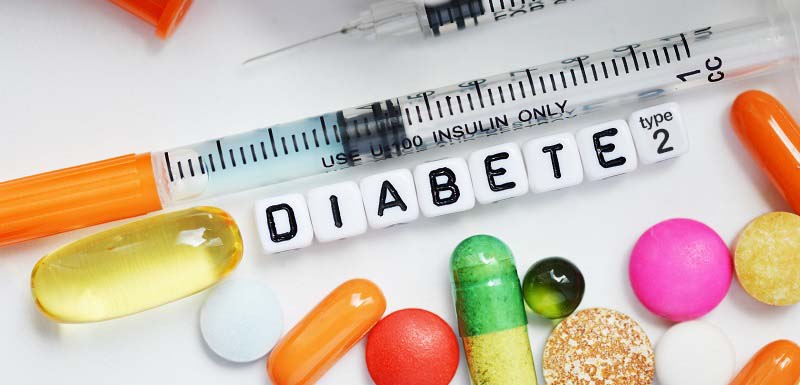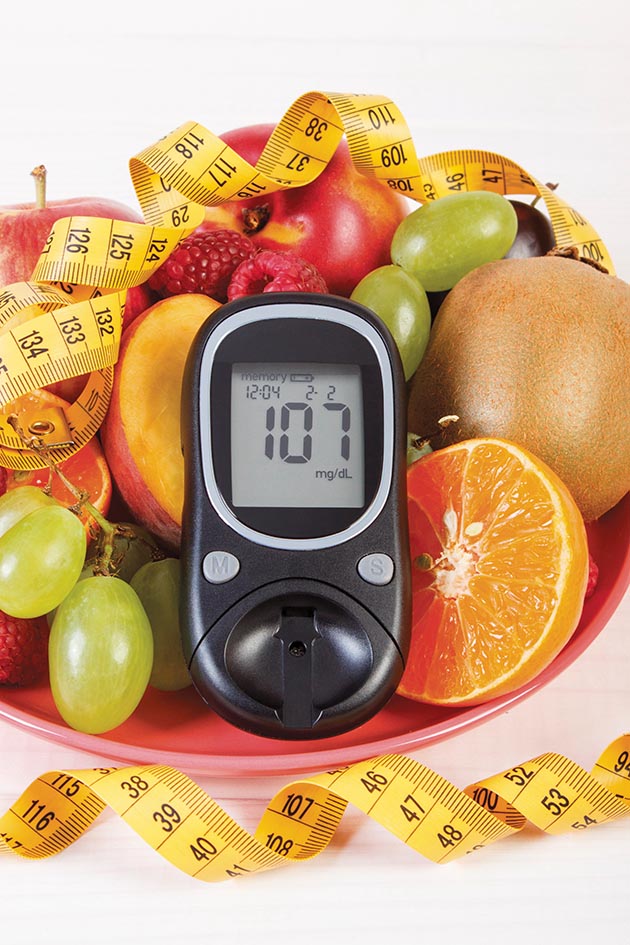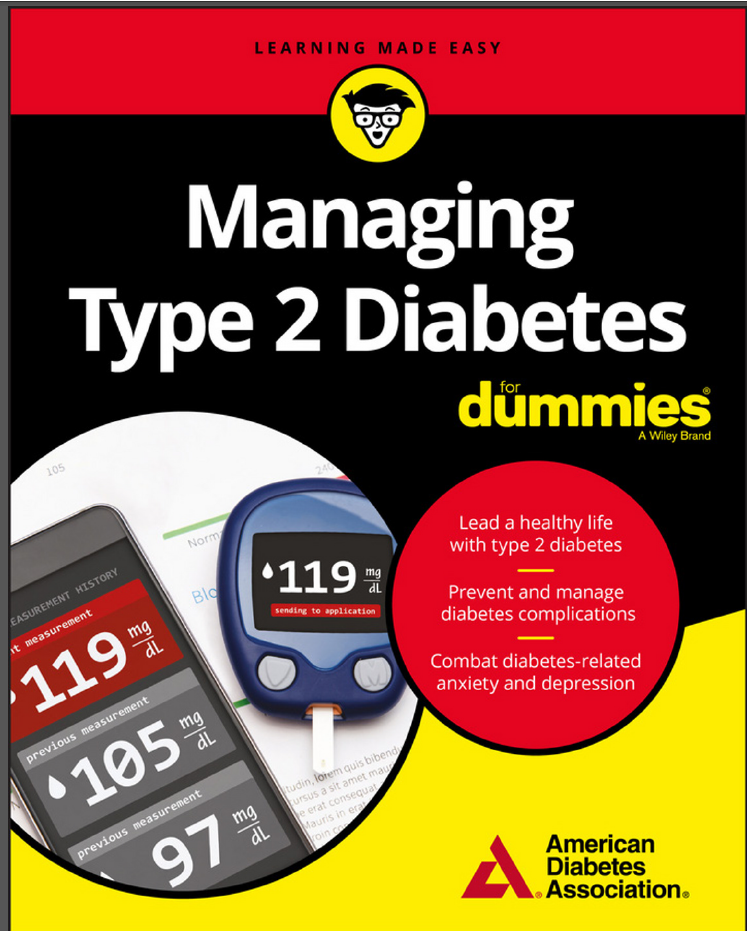See Your Doctor Regularly
If you have diabetes, you should see your provider every 3 months, or as often as instructed. At these visits, your provider may:
- Ask about your blood sugar level
- Check your blood pressure
- Check the feeling in your feet
- Check the skin and bones of your feet and legs
- Examine the back of your eyes
Your provider will also order blood and urine tests to make sure your:
- Kidneys are working well
- Cholesterol and triglyceride levels are healthy
- A1C level is in a good range for you
Talk to your provider about any vaccines you may need, such as the yearly flu shot and the hepatitis B and pneumonia shots.
Visit the dentist every 6 months. Also, see your eye doctor once a year, or as often as instructed.
Work With Your Health Care Team
Most people with diabetes get health care from a primary care professional. Primary care professionals include internists, family physicians, and pediatricians. Sometimes physician assistants and nurses with extra training, called nurse practitioners, provide primary care. You also will need to see other care professionals from time to time. A team of health care professionals can help you improve your diabetes self-care. Remember, you are the most important member of your health care team.
Besides a primary care professional, your health care team may include
- an endocrinologist for more specialized diabetes care
- a registered dietitian, also called a nutritionist
- a nurse
What Is Carb Counting
Carbohydrates are the sugar, starches, and fibers found in many foods, such as grains, fruits, and dairy products. Your body turns carbs into the sugar it uses for energy. This means carbs affect your blood sugar level more than other kinds of foods.
Carb counting is a way to plan your meals. It keeps you aware of the amount of carbs youâre eating. That information can help you control what youâre eating and keep it within a healthy range for people with type 2 diabetes. This helps you manage your blood sugar levels. Doctors often suggest carb counting for people with diabetes who take insulin. It lets you match your insulin dose to the amount of carbs youâre getting.
Carbs are measured in grams. To count your carbs, find out how many carbs are in the foods you eat. Add up the grams to figure out your total for each meal and snack. In general, you should get 45 to 60 grams of carbs with each meal and 15 to 20 grams for each snack.
But remember, not all carbs are created equal. Fresh fruits, veggies, whole grains, and low-fat milk are the best sources of carbs. Your dietitian or diabetes educator can make a specific plan for you.
You May Like: How To Lower High Blood Sugar Without Insulin
Tips For Aging Well With Type 2 Diabetes
- Lean on your medical team, which may consist of an endocrinologist, a podiatrist, an RDE and a CDE, and other specialty health professionals. In many cases, your primary care physician will be your main healthcare provider for diabetes care.
- Stick to your medication regimen, and be open to potential medication adjustments.
- Take insulin if your doctor says you need it.
Everyday Health editors attend the AADEs annual meeting to connect with certified diabetes educators, registered dietitians, and people like you, who are looking for ways to better manage blood sugar, diet, medication, and more. Check out information on this years meeting in Houston.
The ADA is considered the leading nonprofit for type 1 and type 2 diabetes education. The ADA’s free yearlong program Living With Diabetes offers top-of-the-line resources for anyone new to living with diabetes. Youll get access to their newsletter, expert Q& A session, and online support system, among other perks.
One of our favorite features from the AHA is a go-to resource for preventing heart disease: Know Diabetes by Heart. The ADA-supported initiative lays out a step-by-step guide for keeping your heart healthy while living with diabetes.
For more on the association between diabetes and heart disease, check out our article “Heart Disease The Diabetes Connection.”
What Techniques Can I Use To Control My Diabetes

Your ideal management methods will depend on the type of diabetes that you have, your general health, and other factors. As a result, you should talk to your doctor about the management methods that could work for you. That said, there are a number of general management techniques that are used to treat many different types of diabetes.
Read Also: Managing Type 2 Diabetes For Dummies
If Youre In Diabetes Remission
Because your blood sugar levels may go back into the diabetes range even if you have been told youre in remission, you should keep going to your regular check-ups. If youre worried about anything or have any questions, talk to a member of your healthcare team.
We’ve got more information about what you’re entitled to at your annual diabetes checks.
Will you share your story of remission to help inspire others? Wed love to hear from you, whether youre in remission already or thats your goal. All you have to do is fill out this online story form and well be in touch.
Possible Driving Factors Behind Health Disparities
Annals of EpidemiologyPopulation Research and Policy ReviewJournal of General Internal Medicine PLoS MedicineJournal of Racial and Ethnic Health Disparities
Taking the ADAs 60-Second Type 2 Diabetes Risk Test can help you determine whether youre at a higher risk for diabetes based on a number of factors, including your race or ethnicity.
Read Also: How To Treat Early Diabetes
Weight Loss Surgery For Diabetes Remission
Diets arent the only way people with type 2 diabetes have gone into remission some have had bariatric or weight-loss surgery. One study found that almost a third of people who had surgery were in remission after 15 years.
Weight loss surgery for my diabetes has given me a second chance.
Jason is in remission of type 2 diabetes read Jason’s story
Kieran had bariatric surgery in August 2017. He is now in remission read Kierans story
Surgery is no quick fix, but it should be an option for those who want it. At the moment, it can be really difficult to get a referral. So were working to try and make bariatric surgery more accessible for those who fit the criteria.
Get all the facts on weight loss surgery.
What Are The Symptoms Of Type 2 Diabetes
Symptoms of Type 2 diabetes tend to develop slowly over time. They can include:
- Urinary tract infections and bladder infections.
Rarely, Type 2 diabetes leads to a condition called diabetic ketoacidosis . DKA is a life-threatening condition that causes your blood to become acidic. People with Type 1 diabetes are more likely to have DKA.
Read Also: What Is A Good Score For Diabetes
Check Your Blood Sugar
You may be asked to check your blood sugar at home. This will tell you and your provider how well your diet, exercise, and medicines are working. A device called a glucose meter can provide a blood sugar reading from just a drop of blood.
A doctor, nurse, or diabetes educator will help set up a home testing schedule for you. Your doctor will help you set your blood sugar goals.
- Many people with type 2 diabetes need to check their blood sugar only once or twice a day. Some people need to check more often.
- If your blood sugar is in control, you may need to check your blood sugar only a few times a week.
The most important reasons to check your blood sugar are to:
- Monitor if the diabetes medicines you’re taking have a risk of causing low blood sugar .
- Use the blood sugar number to adjust the dose of insulin or other medicine you are taking.
- Use the blood sugar number to help you make good nutrition and activity choices to regulate your blood sugar.
Type 2 Diabetes Diagnosis And Tests
Your doctor can test your blood for signs of type 2 diabetes. Usually, theyâll test you on 2 days to confirm the diagnosis. But if your blood glucose is very high or you have many symptoms, one test may be all you need.
- A1c. It’s like an average of your blood glucose over the past 2 or 3 months.
- Fasting plasma glucose. This is also known as a fasting blood sugar test. It measures your blood sugar on an empty stomach. You won’t be able to eat or drink anything except water for 8 hours before the test.
- Oral glucose tolerance test . This checks your blood glucose before and 2 hours after you drink something sweet to see how your body handles the sugar.
Recommended Reading: Do I Need Prescription For Insulin
If You Smoke Make A Plan To Stop
We know thats nowhere near as easy as it sounds, but smoking can be especially harmful to your health if you have diabetes, Dr. Schutta says.
As we mentioned, having type 2 diabetes raises your risk of cardiovascular issues such as heart disease and stroke. Smoking simply compounds your risk by constricting your blood vessels, the NIDDK explains. It can also impair blood vessels in your legs, leaving you more vulnerable to diabetes complications such as leg infections and amputation.
It can be terribly hard to stop smoking, so dont feel ashamed if you cant do it on your own. Talk to your doctor for tips if you need them.
Amazing Management Tips For Adults Living With Type 2 Diabetes

What is the most important part of managing your diabetes? What contributes to the success of an effective diabetes management?: Is it your diet? Is it your exercise routine? Is it the medications you take?
Should you be too focused on one thing or should you equally give importance to all parts of your diabetes plan? Our experts share tips on how managing type 2 diabetes work. From nutrition to exercise to emotional well-being, they confirm that they are all important in ensuring that your diabetes is well managed. Continue reading to find out!
Here are a few things that come immediately to mind:
Also Check: Insulin Dosing Guidelines Type 1 Diabetes
Symptoms Of Type 2 Diabetes
In type 2 diabetes, your body isnt able to effectively use insulin to bring glucose into your cells. This causes your body to rely on alternative energy sources in your tissues, muscles, and organs. This is a chain reaction that can cause a variety of symptoms.
Type 2 diabetes can develop slowly. The symptoms may be mild and easy to dismiss at first. The early symptoms may include:
Make Physical Activity Part Of Your Daily Routine
Set a goal to be more physically active. Try to work up to 30 minutes or more of physical activity on most days of the week.
Brisk walking and swimming are good ways to move more. If you are not active now, ask your health care team about the types and amounts of physical activity that are right for you. Learn more about being physically active with diabetes.
Following your meal plan and being more active can help you stay at or get to a healthy weight. If you are overweight or obese, work with your health care team to create a weight-loss plan that is right for you.
Read Also: High Blood Sugar And Insulin
Let Your Manager Know
Managing life with diabetes, or any chronic disorder, can be challenging. In one study, employees with diabetes reported having to adapt their disease management to fit their jobs. They also reported running their blood glucose levels at higher than optimal levels when work requirements took priority, leaving little time for self-monitoring, and putting them at greater risk of long-term complications.
If you feel comfortable enough, I recommend confiding in your manager about your condition. While the thought of talking about your health may make you feel vulnerable at first, its important for your boss to understand the impact diabetes may have on you throughout the day. If your manager doesnt know what youre going through, they cant support you in the ways you need. This may include helping you secure time and space for appropriate medical care, or having some knowledge around how to respond should your sugar levels fall or in the case of an emergency, like hypo or hyperglycemia.
Moreover, research shows that people with diabetes miss work two to three times more than the general population. Speaking with your manager may pave the way for you to negotiate a more flexible work arrangement should you suddenly feel unwell.
Prognosis Of Type 2 Diabetes
Dont lose hope, though. You dont have to be a statistic. Receiving a prompt diagnosis can help you get your health on track and reduce your risk for complications.
Indeed, if you take care to manage your blood sugar by following a healthy diet, exercising regularly, taking your prescribed medication, and losing weight, you may find your quality of life to be better with diabetes than it was before your diagnosis.
FEATURED
Read Also: Hope For Type 1 Diabetes Cure
Type 2 Diabetes: A Start Guide For Exercise
Heres how to jump-start an exercise program, overcome common obstacles to exercising, and stay active to better manage your diabetes.
Shutterstock
Exercise has many health benefits, and if you’re living with type 2 diabetes, you know this is especially true for you. Create a regular exercise program, and it will help you control your blood sugar, improve your heart health, boost your mental health, and reach and maintain a healthy weight, says Jacqueline Shahar, M.Ed, RCEP, CDE, a diabetes educator and manager of the clinical exercise physiology department at the Joslin Diabetes Center in Boston. And yet, even if you know how important exercise is in managing diabetes, it can still be difficult to get started. Further, once you start exercising, it can be tough to stay motivated and continue exercising on a regular basis. Follow this guide to get and stay in the groove.
Tests To Monitor Your Health
You’ll need to see your doctor every 3 to 6 months. At each visit you’ll:
- Check your blood sugar levels since your last visit and review your .
- Check your blood pressure and start or adjust treatment if your blood pressure is high. Nerve and blood vessel damage can result from high blood pressure, leading to heart problems and strokes. For more information, see the topic .
- Have a test. This blood test shows how steady your blood sugar levels have been over time.
Your doctor might suggest a test based on your age or your risk for heart disease. Talk to your doctor about when a cholesterol test is right for you.
See a list of to help you remember what to do and when.
You May Like: Normal Blood Sugar For Type 2 Diabetes
The Health Risks Of Type 2 Diabetes
Diabetes is a lifelong condition. High blood glucose levels over a long period of time can cause:
- blindness
- reduced blood supply to the limbs, leading to amputation
- nerve damage
- erectile dysfunction and
- stroke.
Although there is no cure for diabetes, the condition can be managed by medication and/or insulin, and by making healthy lifestyle choices.
Is One Medication Better Than Another

In recent years, many new medicines for treating type 2 diabetes have been developed.
According to international guidelines, patients should take metformin as their first-line type 2 diabetes treatment unless there is a medical reason that it should not be prescribed.
However, various factors should be taken into account when choosing a ‘second-line’ medication to add to metformin. You can find out more about the individual medicines later in this leaflet.
- If it is important to avoid low blood glucose – DPP-4 inhibitor, SGLT-2 inhibitor, pioglitazone or GLP-1 mimetic.
- For people with a history of heart attack, stroke, etc – SGLT-2 inhibitor or GLP-1 mimetic with proven heart benefit.
- For people with a history of heart failure or chronic kidney disease – SGLT-2 inhibitor or, if not suitable, GLP-1 mimetic.
- For people where weight loss or avoiding weight gain is important – SGLT-2 inhibitor or GLP-1 mimetic .
- In the UK, the National Institute for Health and Care Excellence recommends that with some exceptions, GLP-1 mimetics should only be prescribed for people with a body mass index over 35.
Also Check: What To Eat If You Have High Cholesterol And Diabetes
Carb Counting For Type 2 Diabetes
Carbohydrate counting is one approach that you can take to help manage your blood sugar levels. In carb counting, you add up the number of grams of carbohydrates that you eat during each meal.
With careful tracking, you can learn how many grams of carbohydrates you need to eat to maintain a safe blood sugar level while taking insulin injections. A doctor, nurse, or dietitian can help you get started.
Many foods contain carbohydrates, including:
- wheat, rice, and other grains and grain-based foods
- dried beans, lentils, and other legumes
- potatoes and other starchy vegetables
- fruit and fruit juice
- milk and yogurt
- processed snack foods, desserts, and sweetened beverages
There are many books and online resources that you can use to learn how many grams of carbohydrates are found in portions of common foods. You can also check the nutritional labels of packaged and processed foods.